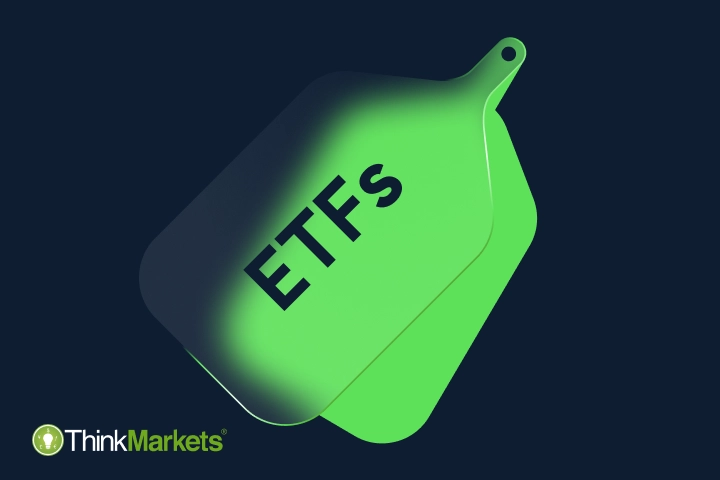Table of contents
- ETF creation and redemption
- What affects ETF prices?
- How to select the best exchange-traded fund to trade
Exchange-traded funds (ETFs) prices are determined by the underlying value of the ETF's holdings. If an ETF tracks an existing index, such as S&P 500, the fund’s price tracks the price of this index. If an ETF is a unique collection of financial instruments, its price is an aggregate of all the prices of instruments within it, which is also called net asset value (NAV).
Once the price is determined by an ETF provider, an ETF issuer is responsible for its maintenance and correspondence with the price of underlying assets. Let’s review what can cause price fluctuations of ETFs.
ETF creation and redemption
As ETFs are subject to the law of supply and demand like any other financial instrument, their price can fluctuate due to changes in correlation between the levels of supply and demand.
High demand with low supply can drive ETFs price up, while the opposite scenario – low demand and high supply can bring its price down. These deviations are usually very minor. When they occur, an ETF issuer adjusts the ETF’s price by selling and buying ETF shares in exchange for the underlying stocks and other included instruments to level off the ETF’s price and value. This mechanism is called creation and redemption. If an ETF provider works with an authorised market participant or market makers, this process is usually done by them.
What affects ETF prices?
Besides insignificant fluctuations due to supply and demand, ETFs can experience price swings caused by underlying asset price movements.
Being widely diversified, ETFs can heavily depend on various factors, depending on the market its underlying assets belong to. That’s why the first step in identifying trading opportunities of an ETF is to identify the markets present within it. Once you know your markets, you can study our articles covering the factors affecting market prices:
- Forex
- Indices
- Commodities
- Crypto
- Stocks
In general, every financial market is susceptible to the following factors:
Economic indicators
Inflation, interest rates, GDP and other economic figures usually have a strong influence across markets and can affect prices both positively and negatively.
Physical supply
The scarcity of some financial instruments, especially commodities, tends to drive their value up.
Political instability
Strikes, armed conflicts and even new policies may have either a positive or negative effect on ETF prices.
Currency fluctuations
With the US dollar being the world’s reserve currency, a lot of other financial instruments can be very sensitive to its fluctuations against other currencies.
Knowing these factors can help traders identify trading opportunities on ETFs, however for a beginner trader it may still be complicated to select the right ETF to trade given the vast variety offered on the market.
How to select the best exchange-traded fund to trade
Selecting an ETF to trade is a subject of personal preference of every individual trader, just like choosing between other financial markets. Some traders prefer forex, some stocks and other commodities – every market has its own benefits, but no market is essentially better than the other. Despite this, there are still factors traders can pay attention to when they try to identify the best ETF to trade.
Select the market
If you're a beginner, we advise you to first trade on a market you're familiar with. If you decide to start trading an ETF that is made of instruments that belong to the market you are not familiar with, dedicate some time to learning its basics.
Find trading opportunities
Check the economic calendar for any upcoming events that make a difference in the trading world. Stay up to date with market news and insights from market analytics.
Check the liquidity of the ETF you select
Highly liquid ETFs tend to be less volatile and, as a result, less risky for trading. It's always a good idea to check the instruments within it. The more well-known the underlying assets are, the higher the chances that a lot of market participants are interested in trading them, which will directly affect the price movements of an ETF.
Once you find an ETF that works best for you, you can put your knowledge into practice on a risk-free demo account. ThinkMarkets’ proprietary trading platform ThinkTrader, for example, offers over 300 ETFs on different markets and virtual funds to help traders improve their skills.

